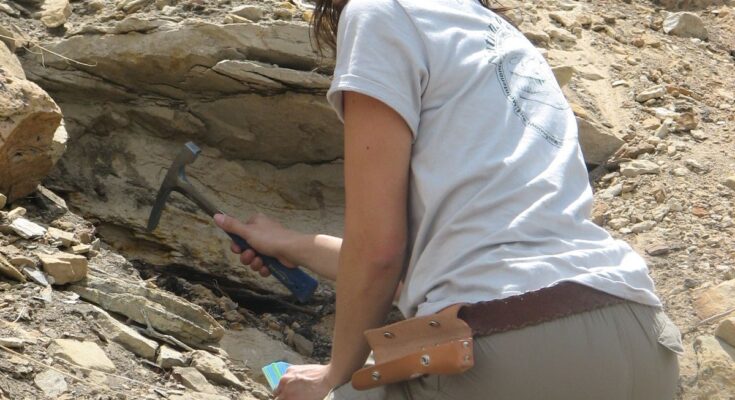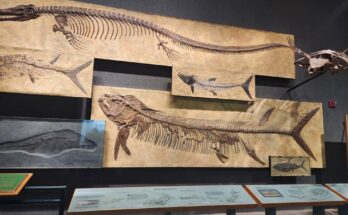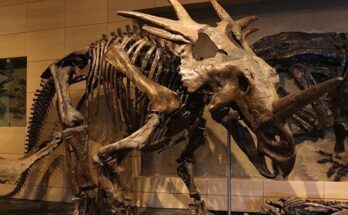Unearthing Ancient Treasures: A Field Paleontologist’s Discovery in Rugged Terrain

In this captivating image, a dedicated field paleontologist embodies the spirit of scientific exploration amidst the stark beauty of a rocky outcrop, likely in a remote geological site such as the badlands of a national park or a fossil-rich sedimentary formation. The scene captures her in a moment of joyful accomplishment, kneeling on a sun-baked slope composed of layered sedimentary rock—predominantly shale and sandstone fragments—that hint at millions of years of Earth’s history. The terrain is arid and uneven, with scattered boulders, loose gravel, and sparse vegetation, including small tufts of hardy grass clinging to the soil, evoking the harsh yet rewarding environments where fossils are often unearthed.
The paleontologist, a young woman in her mid-to-late twenties with long dark hair tied back for practicality, turns toward the camera with a genuine, radiant smile that conveys both the thrill of discovery and the passion for her work. Her attire is purposefully functional and protective, designed for extended fieldwork in challenging conditions. She wears a light gray short-sleeved t-shirt, possibly bearing a faint logo or insignia on the back—suggestive of an affiliation with a research institution or national park service—tucked into khaki cargo pants that provide ample pockets for tools and samples. Sturdy hiking boots with thick treads grip the uneven ground, ensuring stability on the slippery, rock-strewn surface, while a wide leather belt holds a holster for additional equipment, such as chisels or brushes, emphasizing her preparedness for precise excavation tasks.

In her right hand, she confidently grips a professional-grade rock hammer, its pointed pick end poised against the rock face, ready to chip away at the strata. This tool, a staple in paleontology and geology, features a blue handle for ergonomic comfort and a polished steel head, ideal for splitting rock layers without damaging potential fossils beneath. Her left hand holds a small blue notepad or field journal, perhaps jotting down coordinates, observations, or sketches of findings—a critical practice in documenting discoveries to maintain scientific integrity. The excavation site itself appears to be a shallow crevice in the rock formation, where she has carefully exposed a layer, possibly revealing trace fossils, bone fragments, or sedimentary structures that could offer insights into prehistoric ecosystems.

This image not only highlights the physical demands of paleontological fieldwork—requiring endurance, precision, and an eye for detail—but also underscores the interdisciplinary nature of the profession. Paleontologists like her often collaborate with geologists, biologists, and environmental scientists to reconstruct ancient worlds, contributing to our understanding of evolutionary history, climate change patterns, and biodiversity. The sunny, clear weather in the photo suggests a summer expedition, with the high sun casting sharp shadows that accentuate the textures of the rocks and her focused posture. Safety gear, including the green baseball cap with a brim for sun protection (adorned with what appears to be a park service emblem, such as a bison or arrowhead motif), completes her ensemble, reminding viewers of the importance of preparedness in remote locations where weather can shift rapidly and terrain poses hazards like rockfalls or dehydration.
For aspiring scientists or nature enthusiasts, this scene serves as an inspiring testament to the hands-on adventure of fieldwork. It illustrates how paleontology bridges the gap between laboratory analysis and real-world exploration, where each strike of the hammer could uncover evidence of long-extinct species, such as dinosaurs, early mammals, or marine invertebrates preserved in the rock record. Posted on our website as part of our “Explorers in Action” series, this photograph encourages visitors to learn more about ongoing research projects, volunteer opportunities in fossil digs, and the conservation efforts that protect these invaluable sites for future generations. Whether you’re a student, educator, or simply curious about Earth’s past, images like this remind us that history is not confined to books—it’s waiting to be discovered just beneath the surface.



